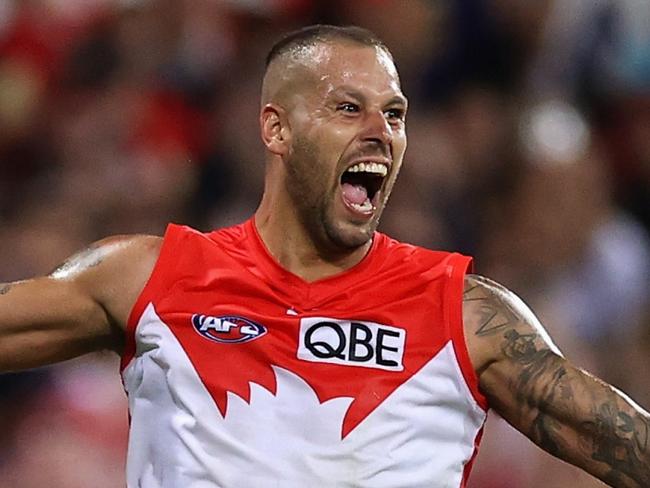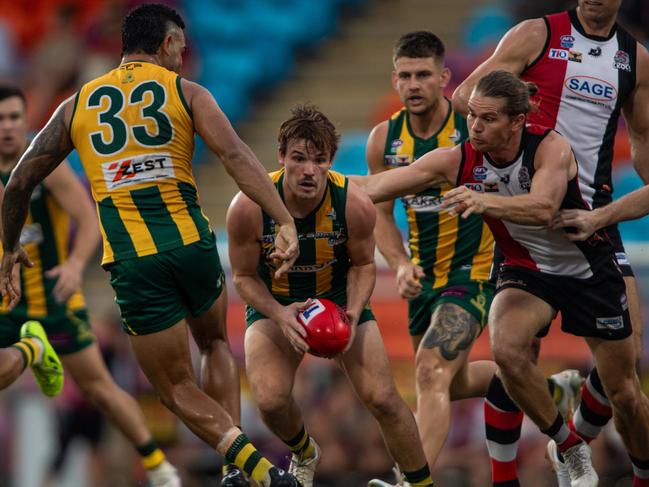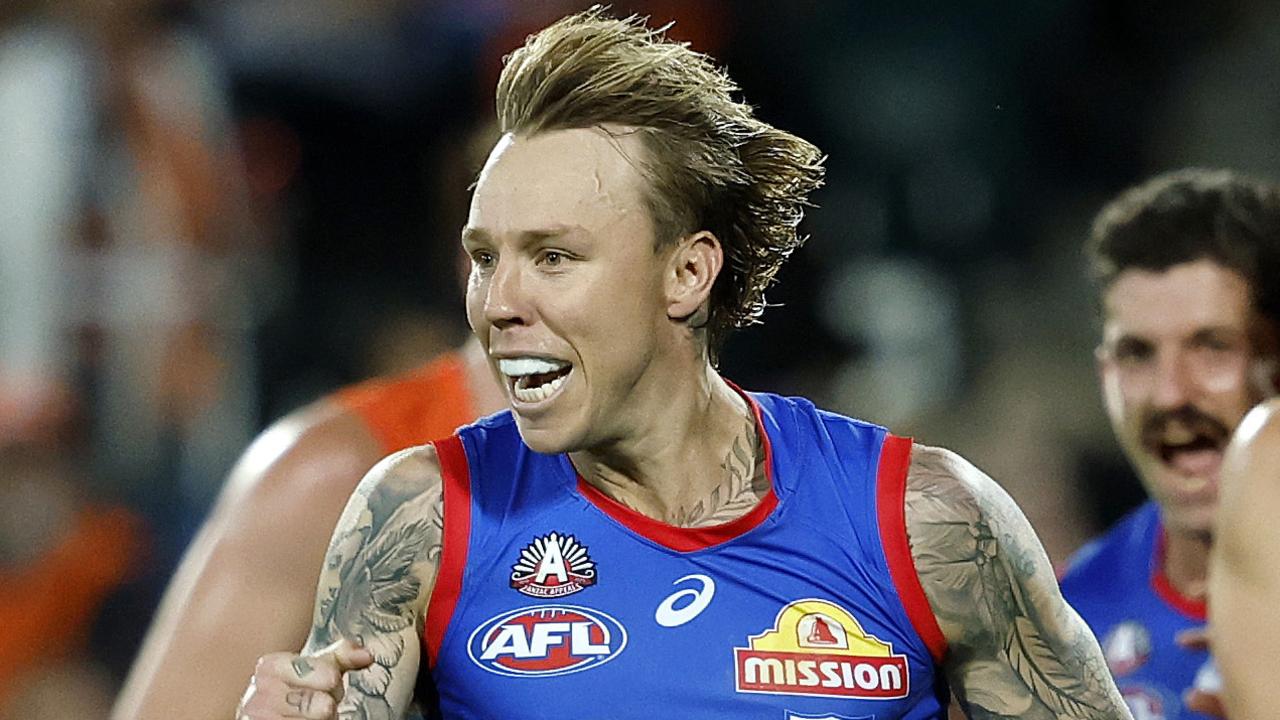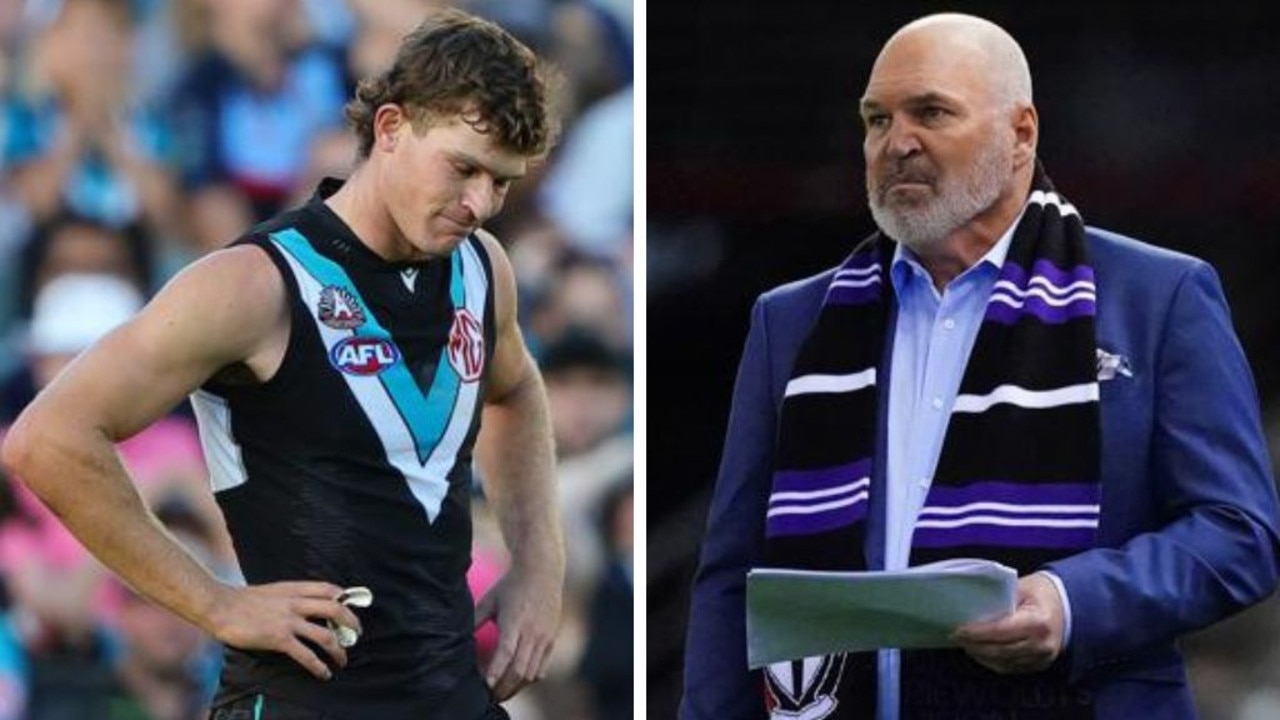Mick McGuane: The left-field solutions to address AFL’s alarming decline of Indigenous players
Indigenous players help make the game special, with some of them being the AFL’s greatest stars. MICK MCGUANE lists his 10 favourite Indigenous AFL players.

AFL
Don't miss out on the headlines from AFL. Followed categories will be added to My News.
Indigenous players make our game special.
They do things on the field that others can’t, exciting crowds in grandstands around the country.
Since the first Norm Smith Medal was handed out in 1979, eight medals have been won by seven different Indigenous players on footy’s biggest stage.
See Mick’s four-point plan to boost indigenous participation in the AFL below
MICK’S TOP-10 FAVOURITE INDIGENOUS PLAYERS
1. Lance Franklin
We’ve never seen a 6ft, 6inch player move the way that ‘Buddy’ did. He had great skills at ground level and in the air, while his kicking ability separated games. Crowds were often deafening when he got near the ball and I’ll never forget the 2010 Goal of the Year that he kicked on Cale Hooker.

2. Andrew McLeod
The Crows champion’s evolution over 16 years to become the player he was and win back-to-back Norm Smith Medals in 1997 and 1998 was a testament to his experience and talent. He was versatile, consistent and had grace and skill that regularly captured my eyes.
3. Nicky Winmar
At his brilliant best, Winmar was electrifying. He would win the ball in so many ways, jump on heads and chase down opponents. His connection with Tony Lockett and Stuart Loewe at St Kilda was amazing, but he also loved to kick a goal himself and regularly did so.
4. Shaun Burgoyne
Longevity, skill, poise and hardness were all key traits of ‘Silk’. At times he made the hard look easy and almost everything he touched would turn to gold. He was also a Mr Fix It, particularly at Hawthorn, able to play anywhere on the ground. Four premierships, 407 games and 35 finals appearances says it all.
5. Cyril Rioli
Simply riveting to watch. If he could win the footy on his own, he would. He’d find space in a phonebox and cleanly exit congestion. Rioli also had a stealth mindset, making opposition ball carriers panic whenever he was in the area. With sometimes minimum disposals, he would change games and kick goals that mattered.
6. Adam Goodes
Was there a position he couldn’t play? Midfield, forward, wing, defence and even ruck – Goodes could do it all. He had great reliance and durability, at one point playing 204 consecutive games within his decorated 372-game career. Add in two premierships and two Brownlow’s and his is a great story.

7. Michael Long
There’s an argument that Long is Essendon’s best ever Indigenous talent. His 1993 season was one to sit back, admire and applaud – culminating in a premiership and a Norm Smith Medal. Long could see options in front of him that other players couldn’t and delivered the footy to them with pure class.
8. Eddie Betts
This guy had the ability to make the ball talk – especially when kicking for goal. He would leave crowds around the country in awe with his ability to crumb packs and snap amazing goals, particularly from the pockets at Adelaide Oval. His goalkicking highlights reels are mesmerising.
9. Peter Matera
To see his speed up close and personal when he played for the Eagles in the early 1990s was something to behold. He would win the footy in the contest and be in 10m of space in the blink of an eye. To kick five goals from the wing in the 1992 Grand Final on his way to a Norm Smith Medal was outstanding.
10. Gavin Wanganeen
Small in stature but big in heart. When Kevin Sheedy decided to play him as a small defender at Essendon and give him licence to play his way, he thrived. He was an intercept defender before that type of player came in vogue, turning defence into attack through courage and reading the cues better than his opponent.
FOUR POINT PLAN TO BOOST INDIGENOUS NUMBERS IN AFL
But, sadly, the number of Indigenous players in the AFL is in decline.
In 2020, there were 87 Indigenous players on AFL lists.
This year there are only 71.
Recognising this trend, the AFL has called on recruiters to pick more Indigenous players in the drafts.
But at a time when there is a squeeze on list spots, the answer is not quite that simple.
Here are three practical solutions that the AFL should explore to boost the number of Indigenous players in the game.
1. ADD MORE ROOKIE SPOTS
Former Essendon forward Dean Rioli is as qualified as anyone to talk on this topic.
He grew up in the remote Tiwi Islands before moving to Darwin and playing for Waratah in the Northern Territory Football League.
At age 14, Rioli shifted again to Perth for school and played for South Fremantle, from where he was drafted by the Bombers as a 1998 rookie selection.
He played 100 AFL games for the club and went on to become Essendon’s first ever Indigenous board member.
“The biggest thing for me with the declining numbers is: What are the solutions out there?” Rioli said.
“How can we actively get these numbers back up again? Because they’re dwindling at an alarming rate.”
Rioli had one potential solution put to him by long-time Bombers list manager Adrian Dodoro a few years ago.
Dodoro made a submission to the AFL, proposing that the league open up new ‘Category C Rookie’ spots.
Under the proposed plan, each club would have two extra spots on both their men’s and women’s lists and would be able to sign any Indigenous players left over after the respective drafts.
The additional ‘Category C Rookie’ list spots would sit outside the salary cap and all the Indigenous players would be involved with their respective clubs as well as going into state-based academies which would be run by the AFL to help them further develop on and off the field.
State-based academies could be named after some of the great modern-day Indigenous players, like Adam Goodes, Lance Franklin or Eddie Betts.

“What I liked about this plan was it’s at least an active solution of trying things,” Rioli said.
“The AFL might have been thinking that Next Generation Academies would help increase the numbers, but it’s dwindling. It probably proves the lack of investment in developing First Nations players and the AFL are just pushing that back onto the clubs to say, ‘Well, here you go, this is your zone, you make the financial investments to try and get these players up to speed’. But obviously that’s where the fall-down is.”
Rioli said the state-based Academies could help provide further support for players from remote areas who can take time to adjust to city life, while clubs would be in less rush for them to perform given there were additional list spots outside of the salary cap.
“The draft is really around the Aboriginal players that live in cities and have access to private schools and these football programs,” Rioli said.
“Some of the conversation is, ‘How do we get some of these remote people exposed to the professional environment?’.
“It might take someone three, four, five years to adjust. But at least they are getting that chance. If they’re not getting that exposure, it’s a big gap from remote to VFL, let alone AFL.”
It’s the type of left-field thinking that the AFL needs to embrace in search of a solution.
2. CHANGE YOUR WAYS, COACHES
Talk to young Indigenous AFL players and they will tell you that they want to have fun on the football field.
They want some licence to take the game on and show the natural talents and flair that got them to the big league.
However, most AFL coaches these days are too hung up on structures and systems.
That appears to be creating a growing divide.
Club officials say that some Indigenous players are becoming victims of the increasing professionalism of the game – but they don’t need to be.
Coaches must understand where these players have come from and how they want to play the game – and better accommodate them within their structures and systems.
Some players – both Indigenous and non-Indigenous – simply don’t play their best football when they are being told where to stand when the opposition has the ball.
They are at their best when their focus is instead on naturally chasing down the opposition ball carrier and ferociously tackling them to create a turnover.
“Football is so structured now and that is where you love the Indigenous players who bring some flair,” Rioli said.
“The Kozzy Pickett’s coming into the game now, Izak Rankine. They just bring that X-Factor that the crowd loves.”
I just wonder if Andrew McLeod would be quite the same in today’s environment.
Would Michael Long conform to the modern day structures and still be able to replicate his outstanding 1993 season?
I worry that we are losing some serious talent to the game because the structural requirements from coaches are so strong.
Here’s some food for thought.
Does Geelong coach Chris Scott allow Tyson Stengle to just play and bring his natural footy instincts to the game, at the expense of where he should be standing structurally or what running patterns he must run?
If so, maybe that is why he is making the most of his second chance at AFL level.

3. HIGHLIGHT TOP END FOOTY
Including pre-season matches, the AFL runs from February to September each year.
There are four other months in which fans are often channel-flicking on their television sets or streaming devices, looking for something to help fill the sizeable footy void in their lives.
Cricket takes over all the ovals in most states during that time – but not in the Northern Territory.
The Northern Territory Football League runs from October to March.
If the AFL wants to shine a light on more Indigenous talent, why not pump some more resources into that competition and stump up some money to support it being broadcast nationally on Fox Footy?
Exposing more young Indigenous players to a national audience would only benefit them and could also get tongues wagging about potential draft picks.
“In the off-season on Foxtel, you see the replays. The nightmare of 1999 (Carlton’s preliminary final win over Essendon) gets played so many times,” Rioli said.
“Why wouldn’t you play some live games, with current VFL and ex-AFL players all running around and then the future talent that probably isn’t being exposed to some of the recruiters at the moment?
“There’s some real talent there.”

4. DON’T SHIFT THE BLAME, AFL
AFL football boss Laura Kane and her management team have to think outside the square and not just point the finger at recruiters as to why Indigenous players aren’t being drafted into the AFL competition.
I recently watched a Coates Talent League match where Northern Territory Thunder lost by 149 points.
The Thunder were miles off the standard expected in a Victorian talent pathways program.
I saw plenty of AFL club recruiters there to witness the poor showing that day, but I didn’t spot any prominent faces from AFL House.
Recruiting talent into clubs should never be about tokenism.
It’s definitely more about earning your spot.
Originally published as Mick McGuane: The left-field solutions to address AFL’s alarming decline of Indigenous players


